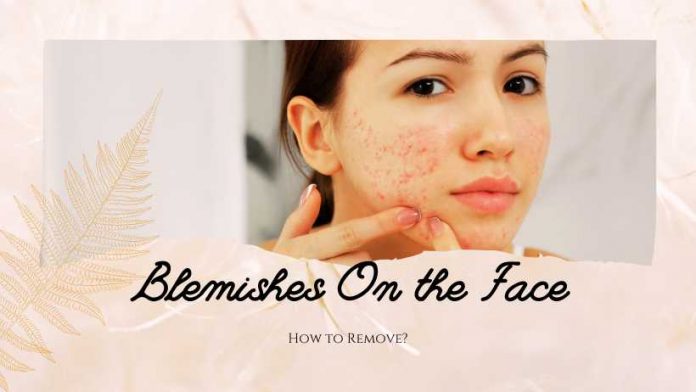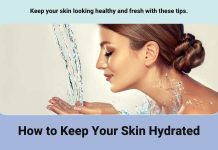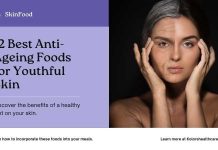There are quite a few types of facial blemishes that are most common among people. These are acne, age spots, and birthmarks. And there are various treatment options available for these conditions that typically depend upon the cause. However, you may have to visit a specialist doctor to assess the exact type and cause of your facial blemish.
Facial blemishes, especially, can be of any type. It can be a mark, discoloration, spot, or flaw that appears on the skin. Blemishes on the face most often can be unpleasant and emotionally disturbing.
Understanding Facial Blemishes
Blemish is a general term that refers to all types of skin marks. And there are many types of blemishes, including the following.
1. Acne
This is a common condition and can appear as blackheads, pimples, or whiteheads. It is typically caused when bacteria, sebum oil, or dirt clogs hair follicles. Acne can at times leave dark spots, pockmarks, or scarring on the skin. Hormonal changes most often play a role in the formation of acne. And stress also can be a factor to make acne worse.
2. Papules
These are small skin lesions of different types. Papules come in various shapes and sizes, ranging from pink to brown. Referred to as pimples sometimes, they can occur individually or in clusters. Most common examples of papules include chickenpox rashes, dermatitis, and eczema. Psoriasis and shingles may also cause the formation of papules.
3. Nodules
These are a collection of tissue that feels hard when touched. Typically larger than papules, nodules often range between 1 to 2 centimeters in diameter. Varying in color from flesh tone to red, they can occur at any skin level. The best examples of nodules include skin tags and warts.
4. Pustules
They are fluid or pus-filled bumps. Both chickenpox blisters and whiteheads are types of pustules. Rosacea and scabies are other conditions that might cause pustules. They are a common skin condition marked by the appearance of blood vessels and blisters.
Other facial blemishes include birthmarks, cold sores, cysts, ingrown hair, melasma, scars, and skin cancer. Of these, melasma is very common during pregnancy due to hormonal changes and sun exposure.
Skincare Tips for Blemish Removal
Skin prone to blemishes is customarily oily. It appears shiny and is susceptible to acne breakouts, blackheads, and pimples. The key to avoiding blemishes is maintaining natural moisture alongside an optimal level of oil on the skin.
Most often, it can be frustrating to deal with blemish-prone skin. Here are a few tips to help you renew clearer skin.
1. Skincare Routine
An ideal skincare routine will help you improve the appearance of blemishes. Facial cleansers usually help keep pores clean, decreasing acne and blemish breakouts. Consider using a cleanser formulated with salicylic acid, as it effectively unclogs pores and reduces inflammation.
- Use a gentle cleanser twice daily to remove dirt, oil, and impurities.
- Exfoliate to remove dead skin cells and unclog pores.
- Use a toner to balance the skin’s pH levels and tighten pores.
- Apply a moisturizer to keep your skin hydrated and nourished.
2. Facial Oil
Include a facial oil in your skincare routine. Combining oils into your skincare routine will bring out a positive outcome. It will help you to achieve and maintain a healthy and active skin barrier as well. Try a facial oil that is essential for skin prone to blemish formation.
- Facial oils help hydrate and nourish the skin and improve its overall appearance and texture.
- They have antibacterial properties that help combat acne-causing bacteria.
- It helps regulate the skin’s natural oil production and balance sebum levels.
- Use facial oils as a part of your nighttime skincare routine that will help in overnight rejuvenation.
3. Avoid Touching
Stop touching your face if you have the urge to burst your blemishes. This can trigger more acne. It can also lead to scarring and infection. Reach out for acne spot treatments containing salicylic acid. They effectively deliver efficacious ingredients to fight acne.
- Avoid picking, squeezing, or popping blemishes; it worsens inflammation and prolongs the healing process.
- Salicylic acid is a key ingredient in acne spot treatments as it helps exfoliate the skin, unclog pores, and reduce redness.
- Use spot treatments with benzoyl peroxide or sulfur, which effectively target acne-causing bacteria.
- Consult an acne specialist at Kolors for personalized treatment.
4. Hydration is Key
All types of skin benefit from hydration. More so if you are using an acne treatment. The body produces more oil when the skin becomes dry. And this can lead to more breakouts. It is important to choose an oil-free, acne-fighting moisturizer. They help soothe and balance your skin.
- Drink adequate water to keep skin hydrated from within.
- Use moisturizers labeled as non-comedogenic. They do not clog pores that cause acne formation.
- Hydrating serums or hyaluronic acid-based products helps boost skin moisture levels.
- Do not use greasy moisturizers as they increase oiliness and clog pores.
A Cleansing Routine
The best acne-fighting skincare routine recommended by dermatologists includes the following.
- Step #1 Never scrub the skin on your face, as this can make it worse. Wash your face gently with a cleanser in the morning.
- Step #2 Let the skin dry and pat gently with a soft towel instead of rubbing. Now spot-treat the blemishes with powerful acne medication.
- Step #3 Apply a non-greasy moisturizer if you are worried about oily skin and clogged pores. Moisturizers help maintain the oil balance of the skin.
- Step #4 Apply sunscreen to protect the skin from UV damage. But choose one that will not clog pores, especially when prone to developing acne.
- Step #5 Cleanse again at night before sleeping. Use a surfactant-free gel-based cleanser and follow it up with a toner. However, ensure that it is oil-free.
- Step #6 The last important step of the routine before going to bed is the application of a retinol product. It will reduce wrinkles and help unclog pores.
Don’t give up! Be patient and consistent with your routine. It takes time to clear and blench existing blemishes on facial skin.
Over-the-Counter Products for Blemish Removal
The cause should always determine treatment options for blemishes. Or else they could become worse. So, speak to your doctor before using the right acne medication.
However, numerous OTC products can help you to reduce blackheads, pimples, and whiteheads. But then you may experiment with several before you find the proper treatment. Various astringents, facial scrubs, and topical gels are commonly available. Choose wisely, and don’t rush into advertised content.
And when your acne does not respond well to OTC solutions, never hesitate to consult your doctor. He may prescribe you oral antibiotics or topical medication instead.
Lifestyle and Skincare Practices
Lifestyle and skincare go hand in hand. A poor diet consisting of sugar and high fats can affect the health of your skin. It can result in blemishes and worsen acne. Lack of vitamins will adversely impact skin health. And poor water intake can result in drier skin.
Proper skincare is essential for people of all age groups. Appropriate diet and exercise will eventually lead to a happier and healthier life. And skincare should always be combined with regular oral and hair care routines for positive results.
Seeking Professional Advice – Kolors Healthcare
Facial blemishes are not only embarrassing but may, at times, signal a serious condition as well. You are better off booking an appointment with a dermatologist at the nearest Kolors Healthcare facility near you.









